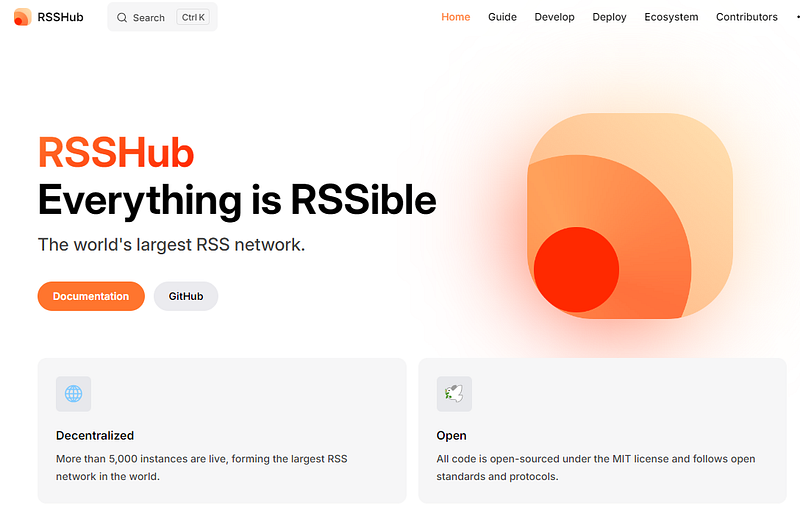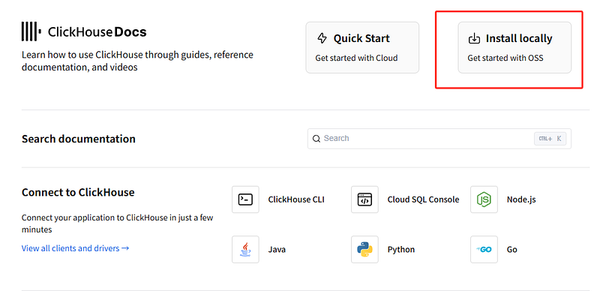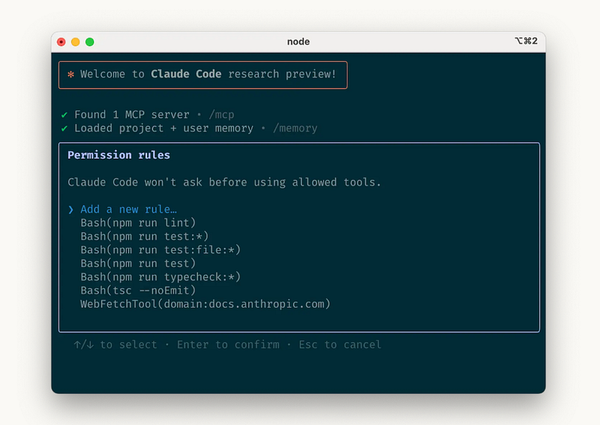Professional Guide: Deploying RSSHub on Your VPS with Docker for Seamless Feed Aggregation
This comprehensive tutorial walks you through deploying RSSHub, a powerful RSS feed generator, on your VPS using Docker. We’ll cover…

This comprehensive tutorial walks you through deploying RSSHub, a powerful RSS feed generator, on your VPS using Docker. We’ll cover preparation, deployment, and optimization in three structured sections.
Part 1: Preparation — Setting Up Your VPS and Environment
1.1 Choose and Configure a VPS
- VPS Provider: Select a reliable provider (e.g., DigitalOcean, Vultr) with at least 1GB RAM and 20GB storage.
- OS Choice: Use Ubuntu 22.04 LTS (recommended for Docker compatibility).

- Initial Setup:deploy/

- Connect to your VPS via SSH:
bash
ssh root@your-vps-ip -p 22Update the system:
apt update && apt upgrade -yCreate a non-root user (replace your-user with your username):
adduser your-user
usermod -aG sudo your-user
su - your-user1.2 Install Docker and Docker Compose
- Install Docker:
- bash
curl -fsSL https://get.docker.com | sh sudo systemctl enable --now docker sudo usermod -aG docker $USER # Add your user to the Docker group- Install Docker Compose:
- bash
sudo curl -L "https://github.com/docker/compose/releases/latest/download/docker-compose-$(uname -s)-$(uname -m)" -o /usr/local/bin/docker-compose sudo chmod +x /usr/local/bin/docker-compose docker-compose --version # Verify installation
1.3 Configure Firewall (UFW)
bash
sudo ufw allow ssh
sudo ufw allow 80/tcp
sudo ufw allow 443/tcp
sudo ufw allow 3000/tcp # RSSHub default port
sudo ufw enable
sudo ufw statusPart 2: Deploying RSSHub with Docker Compose
2.1 Create a Project Directory
bash
mkdir rsshub-deployment && cd rsshub-deployment2.2 Create a Docker Compose File
Create docker-compose.yml with the following configuration:
yaml
version: '3.8'
services:
rsshub:
image: diygod/rsshub:latest # Use the official RSSHub image
container_name: rsshub
ports:
- "3000:3000" # Map host port 3000 to container port 3000
environment:
- NODE_ENV=production
restart: always # Automatically restart on failure
volumes:
- ./data:/app/data # Persist data between restarts2.3 Start the RSSHub Container
bash
docker-compose up -d # Start in detached mode
docker ps # Verify container status2.4 (Optional) Set Up Nginx with HTTPS
2.4.1 Install Nginx
bash
sudo apt install nginx -y2.4.2 Create Nginx Config (/etc/nginx/sites-available/rsshub)
nginx
server {
listen 80;
server_name your-domain.com; # Replace with your domain
return 301 https://$server_name$request_uri;
}
server {
listen 443 ssl;
server_name your-domain.com;
ssl_certificate /etc/letsencrypt/live/your-domain.com/fullchain.pem;
ssl_certificate_key /etc/letsencrypt/live/your-domain.com/privkey.pem;
include /etc/letsencrypt/options-ssl-nginx.conf;
ssl_protocols TLSv1.2 TLSv1.3;
location / {
proxy_pass http://localhost:3000;
proxy_set_header Host $host;
proxy_set_header X-Real-IP $remote_addr;
proxy_set_header X-Forwarded-For $proxy_add_x_forwarded_for;
}
}2.4.3 Enable HTTPS with Let’s Encrypt
bash
sudo ln -s /etc/nginx/sites-available/rsshub /etc/nginx/sites-enabled/
sudo nginx -t && sudo systemctl reload nginx
sudo apt install certbot python3-certbot-nginx
certbot --nginx -d your-domain.com # Follow prompts to secure with SSLPart 3: Verification, Optimization, and Maintenance
3.1 Verify RSSHub Installation
- Access via IP or domain:
- Direct:
http://your-vps-ip:3000 - With domain:
https://your-domain.com - Test a sample feed (e.g., Medium user):
- plaintext
https://your-domain.com/medium/user/your-medium-username
3.2 Optimize Performance
3.2.1 Enable Caching in Nginx
Add to your Nginx location / block:
nginx
proxy_cache_valid 200 1h; # Cache successful responses for 1 hour
proxy_cache_bypass $http_pragma $http_authorization;
proxy_no_cache $http_pragma $http_authorization;3.2.2 Set Resource Limits (Docker Compose)
Update docker-compose.yml:
yaml
services:
rsshub:
# ... existing config
resources:
limits:
memory: 512m # Limit memory to 512MB
cpus: "1.0" # Limit to 1 CPU core3.3 Automated Updates and Backups
- Auto-Update Images: Use
watchtower: - bash
docker run -d --name watchtower \ -v /var/run/docker.sock:/var/run/docker.sock \ containrrr/watchtower- Backup Data: Schedule regular backups:
- bash
docker exec rsshub tar czvf /tmp/rsshub-backup-$(date +%Y%m%d).tar.gz /app/data
3.4 Monitor and Troubleshoot
- Check logs:
- bash
docker logs rsshub -f- Health check endpoint (add to Nginx):
- nginx
location /health { proxy_pass http://localhost:3000/health; allow all; }

Conclusion
By following this guide, you’ve deployed a scalable, secure, and maintainable RSSHub instance on your VPS. The Docker-based setup ensures ease of management, while Nginx and Let’s Encrypt provide production-grade security and accessibility. For further customization, explore RSSHub’s official documentation to expand feed support for platforms like Medium, Twitter, and more.


